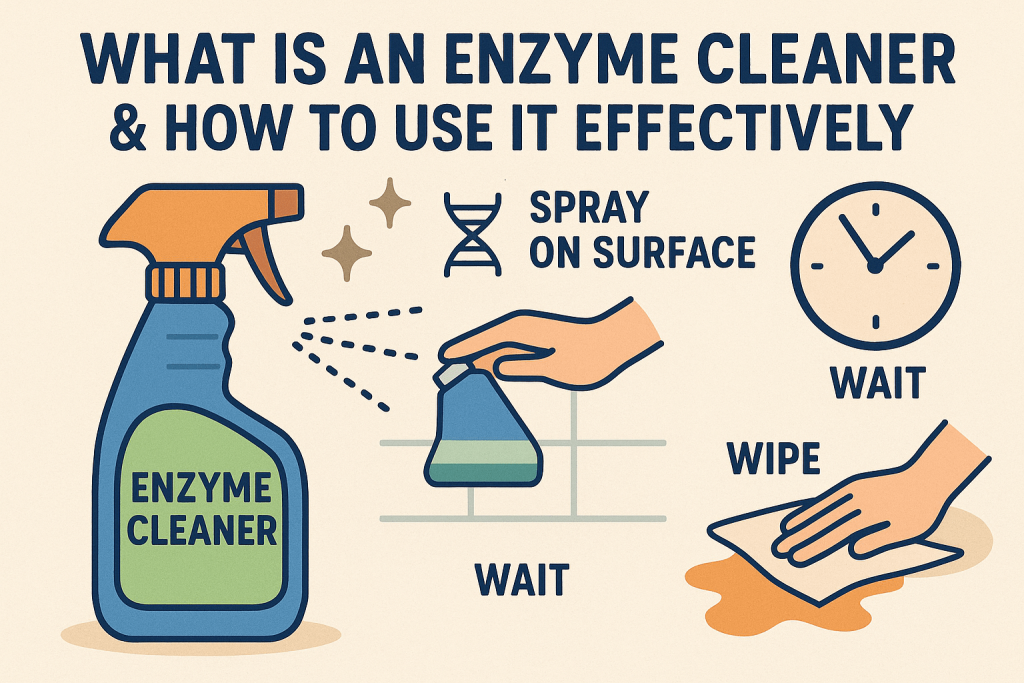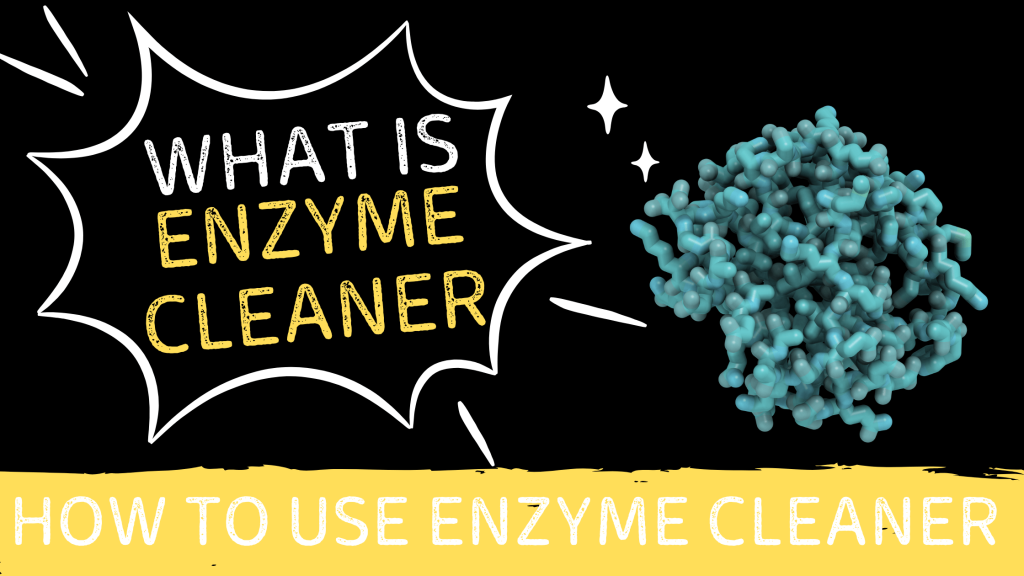In the world of cleaning products, enzyme cleaners have emerged as a powerful, eco-friendly alternative to harsh chemicals — especially when it comes to eliminating organic stains and odors. Whether you’re dealing with pet accidents, food spills, or smelly drains, enzyme cleaners offer a safe and effective solution. In this blog, we’ll break down what enzyme cleaners are, how they work, and how to use them for the best results.
What Is an Enzyme Cleaner?
An enzyme cleaner is a cleaning product that contains beneficial enzymes — biological molecules that speed up the breakdown of organic materials. These materials can include:
-
Protein (blood, food, feces)
-
Fat (grease, oils)
-
Starch (from food residues)
-
Cellulose (plant material)
Enzyme cleaners are especially effective on organic stains and odors, making them ideal for use in homes, commercial spaces, and medical or pet care environments.
How Do Enzyme Cleaners Work?
Unlike traditional cleaners that mask odors or scrub stains away with harsh chemicals, enzyme cleaners break down organic matter at the molecular level. Here’s how it works:
-
Enzymes target specific substances (e.g., protein or fat) in the stain or residue.
-
They break those substances down into smaller, water-soluble molecules.
-
The resulting material is then easily wiped away or rinsed, leaving no trace of the original mess or odor.
Because they work at a microscopic level, enzyme cleaners are often more effective in removing odors that have penetrated soft surfaces like fabric or carpet.
Common Uses for Enzyme Cleaners
-
Pet stains and odors (urine, vomit, feces)
-
Food and beverage spills
-
Bathroom cleaning (toilets, tile grout, drains)
-
Laundry pre-treatment for protein-based stains (blood, sweat, grass)
-
Grease and oil removal in kitchens
-
Eliminating mildew and mold odors
How to Use an Enzyme Cleaner Step-by-Step

1. Identify the stain or odor source
Make sure the area to be cleaned contains organic material — enzyme cleaners are most effective on such messes.
2. Blot excess material (if any)
Remove any solid or liquid waste with a paper towel or cloth before applying the cleaner.
3. Apply the enzyme cleaner generously
Spray or pour the cleaner directly onto the affected area. Make sure it soaks into porous surfaces like fabric, upholstery, or grout.
4. Let it sit
Allow the enzyme cleaner to sit for at least 10–15 minutes (or longer, depending on the product and severity of the stain). This gives the enzymes time to break down the organic matter.
5. Blot or rinse
Blot the area with a clean cloth or sponge, or rinse with water if needed. For laundry, toss the treated item into the washing machine after application.
6. Repeat if necessary
Some stubborn stains or odors may require a second application.
Tips for Best Results
-
Don’t use other chemical cleaners before or after enzyme cleaners — they can interfere with enzyme activity.
-
Store enzyme cleaners at room temperature to keep the enzymes active.
-
Follow the manufacturer’s instructions for specific surfaces (some are not suitable for use on wool or silk).
Enzyme cleaners offer a natural, safe, and highly effective way to tackle everyday cleaning challenges. Whether you’re dealing with a messy pet, a kitchen spill, or a lingering odor, enzyme-based solutions get the job done without harsh chemicals making them a go-to choice for green cleaning and sensitive environments.

